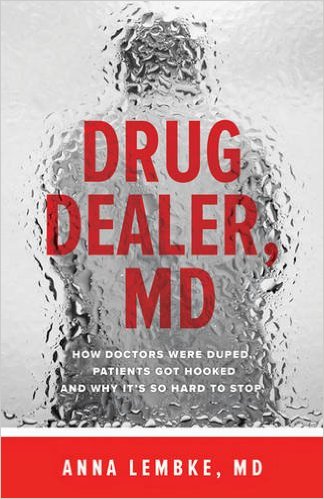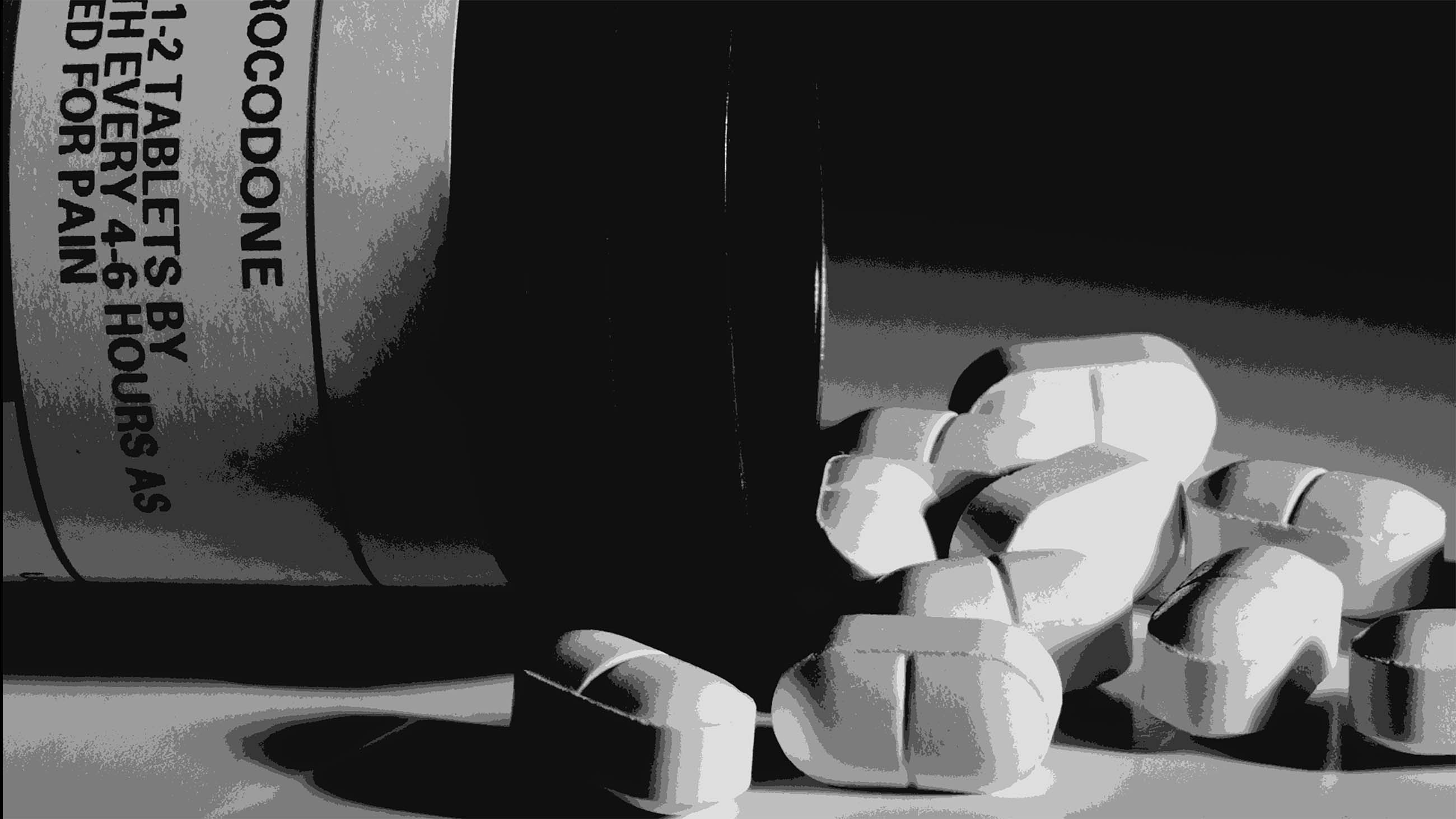It was in 2011 that the Centers for Disease Control first drew public attention to the ongoing nationwide opioid crisis. Much earnest commentary has explored the roots of this new killer epidemic since then, focusing on the broad highway between heroin and pain pills, and the online pharmacies, pill mills, and bad-apple doctors who fueled the two-way traffic and enabled catastrophe.

BOOK REVIEW — “Drug Dealer, M.D.: How Doctors Were Duped, Patients Got Hooked, and Why It’s So Hard to Stop,” by Anna Lembke, M.D. (Johns Hopkins Press, 172 pages.)
Forgive me for rolling my eyes. Anyone with a prescription pad and a shred of common sense saw this whole thing coming down the pike decades ago, a speeding 18-wheeler, tires squealing, no brakes. Furthermore, it has long been clear that while the bad medical apples certainly did their share of damage, there is not a health policy guru or medical school dean in the country whose sins of omission and commission are not also partly responsible. Call it an epidemic of unconscious collusion or, as Dr. Anna Lembke bluntly states, a nation’s doctors “trapped in a system gone mad.”
As far as I am concerned, “Drug Dealer, M.D.,” in less than 200 unassuming, readable, and carefully referenced pages, may be the most important medical book of the decade for finally getting the story of this epidemic exactly right. And it’s not the medical bad apples Lembke is talking about in her title — it’s every doctor in the country.
A psychiatrist and addiction medicine specialist at Stanford University, Lembke patiently unbraids all the strands leading up to our present tangle of pain, drugs and overdose. Parts of her story will be familiar to anyone with an interest in the mechanics of addiction, but vitally important points are likely unfamiliar even to doctors themselves.
She begins with some of the basics behind the appeal of opioids (a term that now encompasses both the naturally occurring opium and morphine and semi-synthetic or synthetic alternatives like heroin, fentanyl, oxycodone, and others). All bind to the same brain receptors. To call the resulting physiological response a “high” fails to do the experience justice. Better adjectives are required, and in the stories of her patients Lembke provides them: energized, peaceful, clearheaded, without worry or doubt — a state of perfect, confident being.
Why should some become addicted to that feeling while others can walk away? A genetic predisposition plays a role, as does a social environment that condones addiction and provides easy access to the drugs. The immature brains of children and teenagers appear particularly susceptible. Once hooked, the brain is transformed, profoundly rewired — the experts call it a “hijacked brain.” Deprived of its drug of choice, the body goes through brutal withdrawal symptoms for a week or so, but the brain will remain miserable for months, years, sometimes decades, fighting to reorient itself. All the poor brain wants is its drug again — or, failing that, another drug — and without effective alternatives to soothe and distract it, the brain’s owner morphs into a monomaniacal drug-seeking machine.
Could there be a more perfect environment for this process to explode than the troubled health care arena of the late 20th century, with its aggressive pharmaceutical industry and its increasingly harried and beleaguered doctors? A variety of potent new synthetic opioids were manufactured by companies that spared no expense in their marketing. These companies encouraged respected medical academic “thought leaders” to vouch for the drugs’ safety and efficacy — not only for the transient pain of a toothache but also for the enduring discomfort of a bad back, a tricky shoulder, a recurrent headache. Doctors were advised to prescribe whatever dose of opioid it took, for as long as it took. Good studies confirming the safety and efficacy of these high-dose long-term prescriptions were never performed.
Pain suddenly became anathema, something to abolish rather than — as was long standard medical practice — to reduce. Regulatory agencies climbed on board the speeding drug machine. Pain was enthroned as “the fifth vital sign,” joining temperature, blood pressure, pulse, and respiration rate in a handy numerical shorthand for a patient’s well-being. Hospitals could then be easily rated on how well they erased patients’ pain, and castigated for not doing well enough. Opioids were used with abandon on hospital wards — but when patients were discharged, they were generally left to their own devices.
The pressure to prescribe escalated in the outpatient community, fueled in part by all those hospital discharges. In addition (odd coincidence), suddenly a whole new cadre of “pain” diseases appeared, fibromyalgia and a half-dozen others. A few doctors were successfully sued for failing to manage their patients’ pain. Of course, almost no doctor was receiving any kind of actual training in how to do that, but many were frightened into trying anyway. Others refused to get involved, saving themselves but leaving the bulk of the opioid prescribing problem to their struggling colleagues.
Addicted patients have a set of predictable behaviors for getting what they want. They may lie, perform, threaten the doctor, flatter the doctor, or just make a complete nuisance of themselves until their Percocet is in hand. Doctors, for their part, have a set of predictable behaviors for dealing with a drug-seeking patient, ranging from avoidance (minimizing contact, canceling visits, not returning phone calls) to denial (“That patient doesn’t have a problem! If he did, I’d know about it!”).
But (and here is where Dr. Lembke plunges into important uncharted territory) it is simply foolish to expect the average doctor to instinctively know how to handle the owner of a hijacked brain. Doctors are “pleasers” — they were selected for their profession precisely because they enjoy helping people. In fact, doctors are junkies in their own right, because nothing gives a doctor a bigger, more addictive high than a happy, grateful patient. The crowd-sourced approval meters of Yelp and all the other web-based doctor raters have only reinforced this addiction.
And it is the very rare addicted patient who will be happy when a doctor begins to probe the painful depths of a pain/addiction problem. For that relationship to be successful, the doctor needs specialized training, patience, and time — lots and lots of time. But time is the one thing American doctors no longer have. Most are now mandated by the terms of their employment to see as many patients as possible, each as briefly as possible. And there is one surefire way to get an addicted patient gratefully, happily on his way: write that prescription.
Is it any wonder this perfect storm has turned prescription painkillers into the demons of our new century?
We have far too few doctors like Lembke, trained both in the science of addiction and techniques for managing its victims. For that shortfall we can blame every medical school and training program in the country, whose curricula stubbornly focus on other illnesses. In fact, as Lembke points out, the 40 million Americans now estimated to suffer from addiction far outnumber those with heart disease, diabetes, or cancer.
The good news is that the opioid crisis has illuminated the need for change, and we will soon begin to graduate doctors with more relevant training. The bad news is that if they are to do their work, and ease the addicted along to a better, safer way of life, we will have to do something about the rest of medicine. In particular, we will have to slow way, way down, back to a pace where prescribing a pill is not the irresistible substitute for an actual time-consuming clinical encounter.
That will take years, decades perhaps. But in the meantime every doctor and concerned citizen can take a first step in the right direction by reading Anna Lembke’s book.
Abigail Zuger is a physician in New York City and a longtime contributor to the science section of The New York Times.











Comments are automatically closed one year after article publication. Archived comments are below.
This opioid is a runaway train epidemic going full throttle still and shows no signs of slowing down but getting worse and faster as the days go by. We are a crippled nation in need of help with as much compassion and true understanding of WHY so many and the few that can walk away not addicted. Who is to blame and where to start healing….
Few pains can be worse than the pain of loosing a child, especially one who inadvertently became addicted through medicine cabinet experimentations .
I lost my lovely beautiful son at the age of 22 on his grandfather’s 88th birthday. Ironical that pills that cause pain are called painkillers.